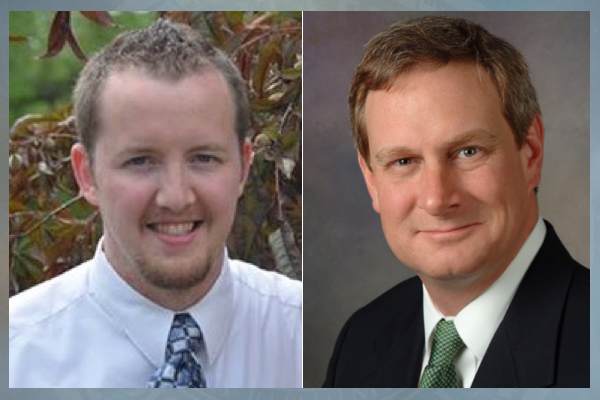
Advances at the microscale
Researchers show how new hydrogel can facilitate microsurgery
12:54 p.m., Nov. 2, 2015--Skillful surgeons can do amazing things in extremely small places, but finding better ways to suture tiny blood vessels has been an ongoing challenge for even the best.
In an article just published in the journal Nature Nanotechnology, several University of Delaware researchers show how a new peptide-based hydrogel could one day make that reconnection process easier to perform and less likely to fail.
Research Stories
Chronic wounds
Prof. Heck's legacy
The new process uses a hydrogel developed by Daniel J. Smith, who earned his doctorate at UD in 2013 and is the lead author of the article. Other collaborators include Katelyn Nagy-Smith, who has recently completed all requirements for her doctorate at UD, and Joel Schneider, who was a professor at UD and now is in the Chemical Biology Laboratory at the National Cancer Institute.
Also part of the study were researchers from Johns Hopkins University School of Medicine and the Department of Electrical and Computer Engineering at Johns Hopkins.
Smith designed the peptide, building on a self-assembling process developed more than a decade ago by Schneider while he was a professor in UD's Department of Chemistry and Biochemistry, and Darrin Pochan, professor and chair of UD's Department of Materials Science and Engineering.
Nagy-Smith did the microscopy, using a transmission electron microscope at the National Cancer Institute to show how the fibers change when exposed to ultraviolet light.
The way tiny vessels are reconnected now includes stitches applied in microsurgery. But the tiny, thin-walled vessels are fragile and prone to damage in handling.
The peptide-based hydrogel can be tuned in precise ways with a specific amino acid, allowing the material to change form several times during a procedure – becoming rigid enough to open and support a tiny vessel when first injected and then, after the sutures are complete, dissolving quickly under ultraviolet light to allow restored circulation.
Smith placed the amino acid into the sequence in a way that allows precise control and found the hydrogel would form a semi-solid to support the walls of the tiny vessel, preventing damage during the suturing while also suspending the ends for better control.
"It's analagous to Lego blocks putting themselves together to build a structure, then breaking down when told to do so," said Smith, who now works at Glaxo Smith Kline. "There are attractive forces at work – these are hydrophobic, greasy molecules that want to associate together, but can also be triggered to come apart."
So, he said, when the substance is injected into the ends of the tiny vessel, the excess oozes out of the ends forming a small mass of gel that surrounds both ends, allowing surgeons to make an easier connection.
"This would help in any type of surgery where you are trying to restore as many vessels as you can, whether in a whole transplant or in damaged tissue from some kind of accident," Nagy-Smith said. "It not only holds the vessel open, it actually sticks vessels in place without using a lot of clamps. The surgeon essentially has a third hand."
Tested with mice, whose femoral arteries are about 200 microns in diameter – four or five human hairs – the paper shows the precise process used by the collaborators and suggests the hydrogel could one day be used in cardiac bypass and transplant surgeries and also could open up new possibilities in research.
The research was supported by the Intramural Research Program of the National Institutes of Health, the National Cancer Institute and the Center for Cancer Research.
Article by Beth Miller








